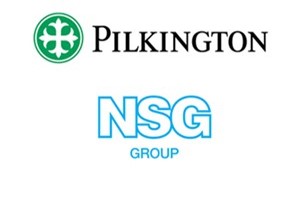Measurement of coated glass temperature within the furnace/manufacturing process
The Innovation Exchange (iX) programme is supporting Pilkington to identify and trial techniques to accurately measure the temperature of glass. Pilkington is part of the NSG Group, one of the world’s largest manufacturers of glass and glazing products for Architectural, Automotive and Technical applications. Pilkington are seeking solutions to improve their capability to manufacture coated flat glass and vehicle glazings to very tight functional and aesthetic specifications by incorporating smart manufacturing techniques. The temperature of the glass is a key parameter and they are seeking solutions for measurement technology able to overcome the limitations of fixed wavelength pyrometers which struggle to provide accurate measurements of glass with variable or unknown surface emissivity. The iX program will identify capable inspection partners to demonstrate proof of concept/feasibility, with further development needed to fully realise the concept.
Opportunity
Challenge opens
20/08/2025
Challenge closes
17/09/2025
Benefit
Pilkington Technology Management Limited (Pilkington) are looking for new solutions to measure the temperature of coated glass more accurately and reliably in their float glass production process and their automotive bending furnaces. The selected solution provider will be invited to apply for up to £25,000 grant funding to work with the leading UK glass manufacturer to trial a solution in a 3 month project, with a view to co-developing the concept for high volume manufacture with Pilkington’s UK R&D team. This iX challenge is a conduit to working with a global corporation with the potential to deploy the technology in other locations and application areas of the business.
Background
Over the past 50 years almost every major advance in glass has come from Pilkington, from the invention of the float process to self-cleaning glass. Pilkington invests around £29 million a year in research and development focused on product development and manufacturing efficiency improvement.
Significant among these advances is the use of Chemical Vapour Deposition (CVD) for large area glass coating. The temperature of the glass substrate is critical to promoting & maintaining the growth of the coating which is typically made up of several individual layers, each contributing to the overall properties of the coating. The coating process takes place in the float bath where the glass is formed into a flat ribbon whilst floating on a bed of molten tin. The ability to accurately measure the glass temperature at different stages of the coating process is essential for effective control of product performance. Understanding and tuning of the glass temperature is also central to the development of new coating materials and new coated products.
Pyrometry is the standard method used to remotely measure glass temperature but difficulties arise due to the transparency of glass. Care must be taken to use an appropriate wavelength; some wavelengths sample only the surface, others measure the bulk, and it is possible to capture radiation from other sources which can influence the results. These challenges are generally manageable for standard glass substrates, but coated glass adds additional complexity.
In the automotive area, Pilkington has pioneered the use of press-bending technology to manufacture advanced, high-value, vehicle glazing. This technology has enabled industry firsts with complex glass shapes, very tight tolerances for glass surfaces, and augmented reality head-up display systems. With press-bending, each glass ply is formed between a male and female tooling to precisely control glass shape. Monitoring and controlling the temperature distribution of the glass before pressing is the critical process parameter; too cold and the glass will break during pressing, too hot and the tooling contact can cause optical distortion. Modern windshields incorporate different coatings in selected areas of the glazing for obscuration and infra-red reflection. At the processing temperatures the emissivity of these materials is not well defined and can change during processing. Fixed wavelength scanning pyrometry system cannot accurately map the temperature of the glass.
This challenge is brought to you by:


